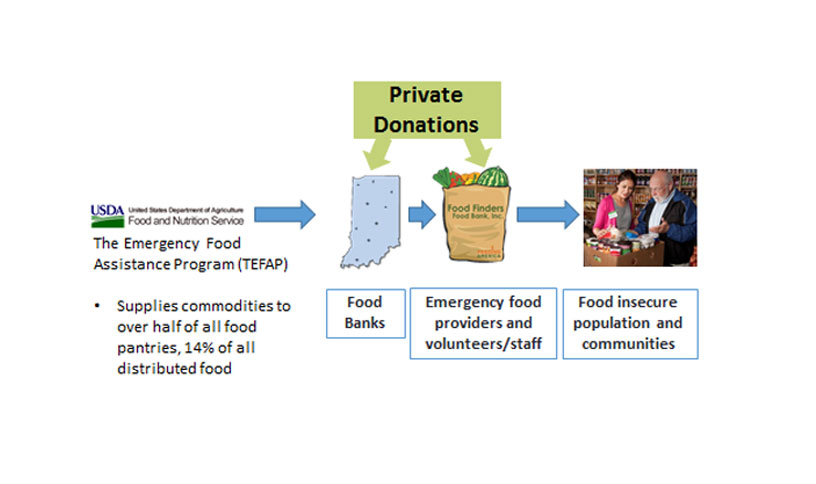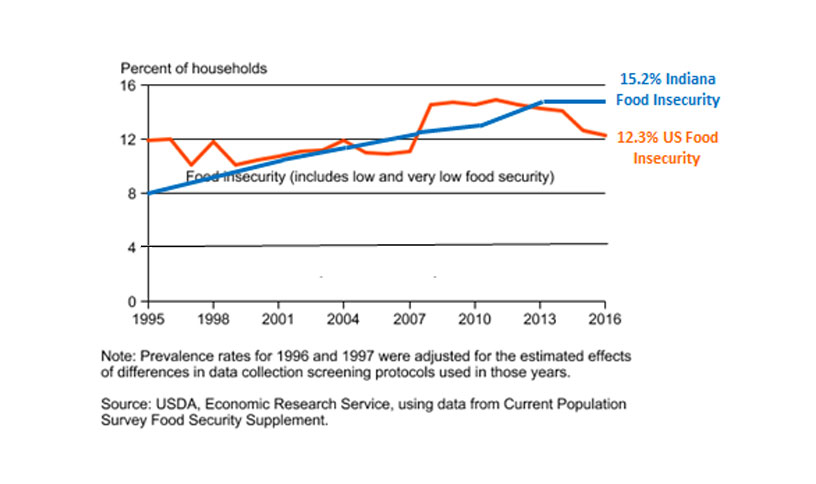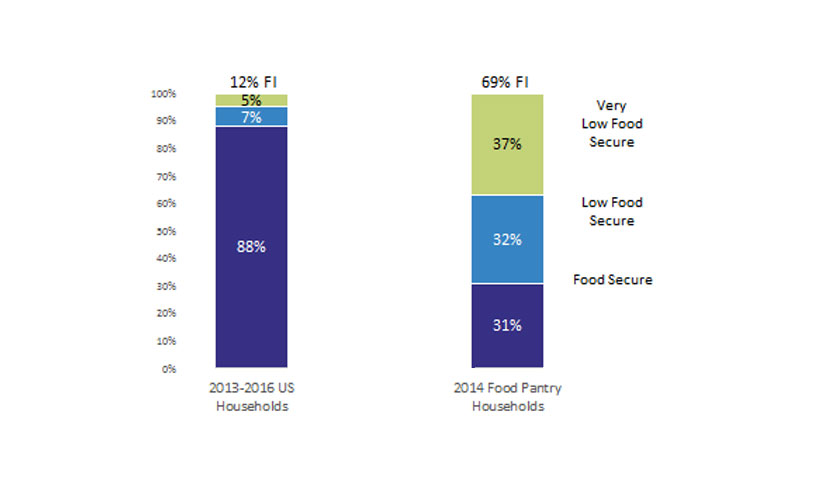Food insecurity exists whenever the availability of nutritionally adequate and safe foods or the ability to acquire acceptable foods in socially acceptable ways is limited or uncertain.
–S.A. Anderson, ed., “Core Indicators of Nutritional State for Difficult-to-Sample Populations,” The Journal of Nutrition 120:1557S-1600S, 1990.
What is FOOD INSECURITY and how can it lead to hunger?
Food insecurity describes a situation of too little access to food. Food insecurity can result in hunger. Individuals, households and communities may experience food insecurity. Food insecurity and hunger are both associated with poorer overall health, mental health, and chronic disease among US adults and poorer health and development among US children.
Food security can be classified to four ranges: high food security, marginal food security, low food security, and very low food security.
High Food Security
When there are no reported problems with food access or sufficiency. Normal food patterns stay constant.
Marginal Food Security
When there is stress associated with getting enough food, but usually little or no change in variety, amount, or quality of dietary intake.
Low Food Security
When a lower quality diet or diet including less desirable foods is present, but the amount of food is not changed.
Very Low Food Insecurity
When less food is available and individuals do not eat enough. Variety and quality of food is also reduced.
The Emergency Food Assistance Network provides food to Food Insecure Households and Individuals
The emergency food assistance network includes private and community affiliated organizations such as food pantries, soup kitchens, and shelters. These organizations gather donated foods from the community and other resources and may also receive US commodity foods provided through The Emergency Food Assistance Program or TEFAP. Emergency food assistance providers distribute these foods to food insecure households at no cost. Foods distributed through emergency food assistance providers may be responsible for up to 25% of the household food supply among the U.S. households that used them. Reliance on emergency food assistance is also estimated to be increasing among food insecure households. References: Verpy H, et al. J Nutr Educ Behav. 2003;35(1):6-15. Conference of Mayors Hunger and Homelessness Survey (2013)
The Emergency Food Assistance Network


